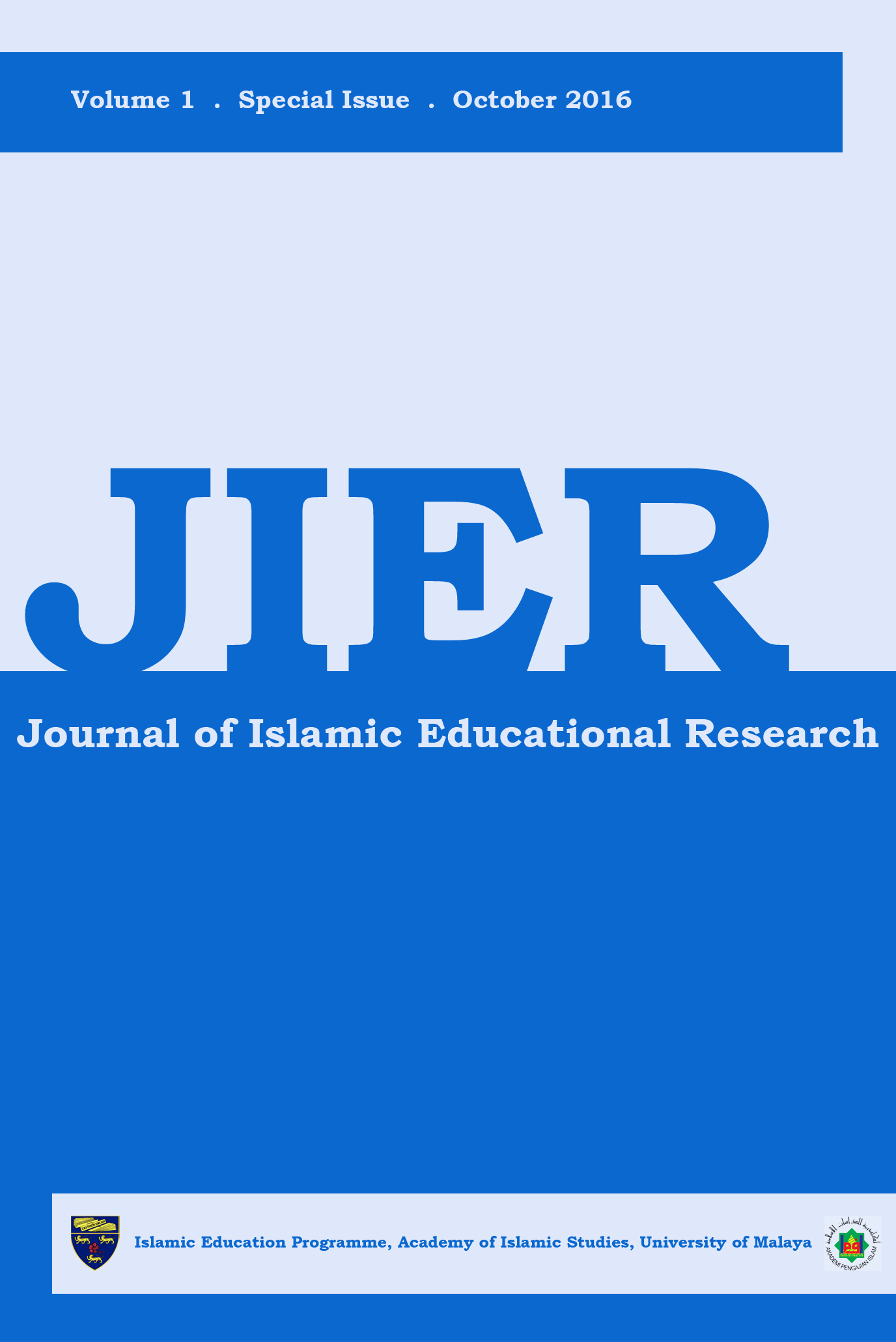DIMENSI PENILAIAN DALAM PENDIDIKAN ALAM SEKITAR MERENTAS PENGAJARAN DAN PEMBELAJARAN PENDIDIKAN ISLAM
DIMENSION OF EVALUATION IN ENVIRONMENTAL EDUCATION ACROSS THE TEACHING AND LEARNING OF ISLAMIC EDUCATION
DOI:
https://doi.org/10.22452/jier.sp2016no1.3Keywords:
Evaluation Strategies, Teaching and Learning, Islamic Education, Environmental EducationAbstract
Every religion especially Islam promotes the practices of environment sustainability in daily life. Islam, in particular emphasizes on the principles and etiquette of preserving and conserving the environment. The teaching and learning process of Islamic education in school is amongst the main medium to deliver the integral values of Islamic teachings on environment. The question is, how far teachers could measure the values that are being instilled to the students from the teaching and learning process. Therefore, a qualitative study has been carried out to explore teachers’ dimension of evaluation in environmental education across the teaching and learning of Islamic education in eco-school context. This study involves six informants among Islamic education teachers. Three dimensions of teachers’ evaluation have been identified as preliminary findings through the semi-structured interview. The outcome of this study highlights the strategies and challenges faced by the teachers which could either benefit the learning process or might require improvisation to strengthen the teaching process.
Downloads
Downloads
Published
How to Cite
Issue
Section
License
The published manuscript shall be a copyright of the Islamic Education Programme, Academy of Islamic Studies, University of Malaya, Kuala Lumpur, Malaysia. The published manuscript would not represent the stand or opinion of the Advisory Board, Editorial Board, Co-Editorial Board and the Management Team of Journal of Islamic Educational Research (JIER), or the Islamic Education Programme, Academy of Islamic Studies, University of Malaya.
Note: This is an open access journal which means that all content is freely available without charge to the user or his/her institution. Users are allowed to read, download, copy, distribute, print, search, or link to the full texts of the articles in this journal without asking prior permission from the publisher or the author. This is in accordance with the BOAI definition of open access.


